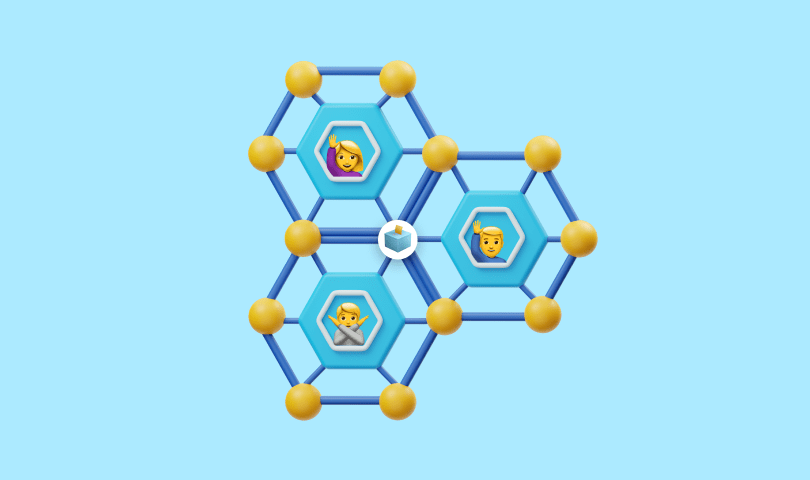
Contents
- 1 What makes a Web3 project decentralized?
- 2 What are smart contracts and the “on-chain entity” in Web3 projects?
- 3 What is off-chain management in Web3 projects?
- 4 What does off-chain management of Web3 projects include?
- 5 What makes up the decentralized governance design?
- 6 Forming a DAO with a Legal Wrapper
- 7 FAQs
- 8 Conclusion
What makes a Web3 project decentralized?
Complete decentralization is the key aspect of Web3 companies. This decentralization entails the absence of centralized administrators, moderators, and managers. Unlike Web2 companies, Web3 projects do not rely on centralized servers, hosting, or domain providers. Instead, they leverage decentralized blockchain networks for viability. Furthermore, Web3 ventures embrace the principles of being ownerless and permissionless, striving for the highest level of autonomy and independence possible.
What are smart contracts and the “on-chain entity” in Web3 projects?
Smart contracts are autonomous software algorithms that form the foundation of Web3 projects and operate within blockchain networks such as Ethereum, NEAR, or Solana. A Web3 project typically consists of multiple smart contracts, each responsible for a specific process within the company. These smart contracts facilitate various functions, including enabling transactions, issuing tokens, managing liquidity pools, and establishing treasuries. Since smart contracts operate within decentralized blockchain networks, they are often referred to as an “on-chain entity.”
What is off-chain management in Web3 projects?
While Web3 projects strive for autonomy and decentralization, it is often challenging to achieve this in the early stages of development. To allow flexibility and rapid iteration, manual intervention with the operation of smart contracts becomes necessary. This intervention involves participants with private keys to the smart contracts, enabling them to make off-chain changes. Off-chain management refers to these external interventions originating from the centralized world.
What does off-chain management of Web3 projects include?
Off-chain management allows intervention in the operation of smart contracts. This includes issuing additional tokens or burning existing ones, modifying smart contract rules, increasing liquidity pools, managing treasuries, and issuing grants. In the early stages, founders possess the private keys necessary for off-chain management. However, as the project matures and necessary adjustments are made, founders often transfer off-chain management rights to participants, decentralizing the project’s governance.
What makes up the decentralized governance design?
Decentralized governance design involves answering crucial questions to achieve the goal of decentralization:
- Which participants in the Web3 ecosystem will receive governance rights?
- What method will be used to issue voting rights? Will it be based on token staking or separate governance tokens?
- What types of decisions can be made through decentralized governance?
- What is the procedure for making decisions, including proposal publication, voting organization, and decision implementation?
- Which document regulates decentralized governance and makes voting legally binding?
Forming a DAO with a Legal Wrapper
Once the concept of decentralized governance is developed for the on-chain entity, Web3 founders gather a group of individuals to participate in the project’s decentralized governance. This community-backed on-chain entity is known as a Decentralized Autonomous Organization (DAO), and its members are DAO members. Before launching a DAO, founders must ensure two things: legal protection for DAO members and the preparation of a legal document outlining the rules of decentralized governance.
To provide legal protection, a Legal Wrapper is created for the DAO. This shields DAO members from unlimited liability resulting from the DAO’s activities. Additionally, a DAO Constitution is prepared to establish the principles of decentralized governance. The provisions of the DAO Constitution are then used as the basis for the statutory documents of the DAO Legal Wrapper, ensuring the process is legally binding.
Disclaimer: The information in this guide is provided for informational purposes only and should not be construed as legal, tax, investment, trading, financial, or any other form of advice.
FAQs
Q: What is Web3?
A: Web3 refers to the next generation of the internet, characterized by decentralization and the use of blockchain technology.
Q: How does decentralized governance benefit Web3 projects?
A: Decentralized governance ensures that decision-making power is distributed among participants, creating a more democratic and transparent ecosystem.
Q: What are the risks associated with off-chain management in Web3 projects?
A: The main risk is the potential for centralization if off-chain management is not gradually decentralized and if decision-making power remains concentrated in the hands of a few individuals.
Conclusion
Decentralized Autonomous Organizations (DAOs) and decentralized governance play a vital role in the Web3 ecosystem. By embracing decentralization, Web3 projects can foster innovation and empower participants to shape the future of their own communities. As the Web3 space continues to evolve, DAO governance will remain a critical aspect of building sustainable and inclusive organizations.
Read more: Intro to DAO Governance: a Guide for Web3 Founders







